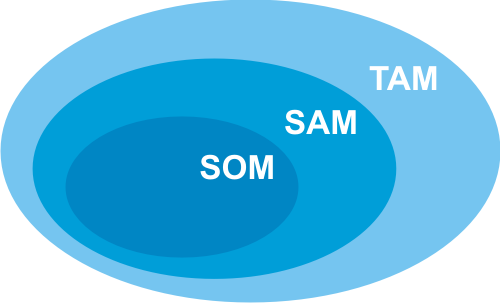Articles Description
One of the most critical elements of building a successful startup is developing a revenue model that can grow as your business scales. A scalable revenue model ensures that as your customer base and market expand, your revenue can increase proportionally, without significant increases in costs. In this article, we’ll explore strategies that early-stage startups can use to design a scalable revenue model.
1. Understand Different Types of Revenue Streams
When designing your revenue model, it’s essential to first understand the various ways you can generate income. Here are some common revenue streams used by startups:
• Subscription Model: In this model, customers pay a recurring fee, usually monthly or annually, to access your product or service. This provides predictable revenue and customer retention but requires you to constantly deliver value to maintain subscribers.
Example: SaaS companies like Dropbox or Netflix use this model, where users pay a subscription to access the service.
• Freemium Model: This is a variation of the subscription model where you offer a basic product for free and charge for premium features or services. It allows you to attract a large user base while monetizing a percentage of those users.
Example: Spotify allows free access to its basic service but charges for premium features like ad-free listening and offline access.
• Transaction-Based Model: Revenue is generated through one-time transactions where customers pay for a product or service. This can be through direct sales, marketplace commissions, or fees for service.
Example: eCommerce platforms like Amazon, or marketplaces like Airbnb, where revenue is earned on each transaction.
• Advertising Model: If you have a platform with high user engagement, you can generate revenue by offering advertising space to other businesses. This model requires scale to be effective, so it's often used in conjunction with other revenue streams.
Example: Google and Facebook generate revenue by selling targeted ads based on user data.
• Licensing Model: In this model, you license your product or technology to other companies who pay a fee to use it. This is common in industries like software or biotechnology.
Example: Microsoft licenses its software to businesses that need their operating systems and productivity tools.
2. Align Your Revenue Model with Customer Behavior
Once you understand the types of revenue streams available, it’s crucial to choose a model that aligns with how your customers will use your product or service. Ask yourself the following questions:
• How do customers prefer to pay for your product? Are they willing to pay a large one-time fee, or would they prefer smaller, recurring payments?
• What’s the lifecycle of your product? If your product offers continuous value over time (like a software tool), a subscription model might make sense. For products with a single-use case (like a physical product), a transaction-based model may be more appropriate.
• Is there a free version or trial period? Freemium models work well for products where users need to experience the value before committing to paying.
3. Prioritize Scalability from the Start
To ensure your revenue model is scalable, you need to design it in a way that your revenue grows with increased usage, but your costs don’t increase at the same rate. Here are a few ways to achieve that:
• Automate Processes: The more automation you can introduce into your business, the more scalable your model becomes. Automated processes reduce the need for manual labor, keeping operational costs low as you grow. For example, automated customer onboarding, payment processing, and customer support (via chatbots) can drastically reduce overhead.
• Leverage Digital Platforms: Digital products like software, online courses, or digital downloads are inherently scalable because the cost of producing additional units is minimal. Unlike physical products, where costs rise with each unit produced, digital goods allow you to serve more customers without significantly increasing costs.
• Network Effects: If your product or service becomes more valuable as more people use it, you have a powerful mechanism for scalability. Platforms like Facebook and Uber benefit from network effects because the more users join, the more value the platform offers to everyone, without substantial incremental costs.
4. Build Flexibility into Your Model
As a startup, flexibility is key. Your business will likely evolve, and so should your revenue model. Consider a model that can adapt to different market conditions and customer needs:
• Multiple Revenue Streams: Many successful startups generate revenue from more than one stream. For example, a SaaS company might primarily rely on subscriptions but could also offer consulting services or affiliate programs as additional income sources.
• Tiered Pricing: Offering different pricing tiers allows you to capture different segments of the market. For instance, basic, premium, and enterprise pricing tiers can serve individual users, small businesses, and large corporations. This structure also allows you to upsell users to higher tiers as they grow and need more features.
• International Markets: As your startup grows, consider whether your revenue model can adapt to international markets. This could mean accepting different currencies, adapting pricing strategies, or dealing with regional regulatory issues.
5. Test and Iterate Your Revenue Model
Your initial revenue model won’t be perfect. It’s essential to continually test and refine it based on feedback and performance. Here’s how:
• Monitor Key Metrics: Track customer acquisition costs (CAC), customer lifetime value (CLV), and churn rates to understand the effectiveness of your revenue model. If you notice that your CAC is too high or your churn rate is rising, it may be time to adjust your pricing or value proposition.
• Conduct Customer Feedback: Regularly engage with your customers to understand what they value most about your product and what they’re willing to pay for. This feedback can help you refine your offerings and improve your revenue streams.
• Experiment with Pricing: Don’t be afraid to experiment with different pricing models. For example, A/B test different price points, trial periods, or subscription lengths to see what resonates best with your audience.
Conclusion
Designing a scalable revenue model is a critical part of building a successful startup. By aligning your revenue streams with customer behavior, prioritizing automation and digital platforms, and maintaining flexibility, you can ensure that your startup generates sustainable growth. Remember to continually test and iterate on your model as you learn from customer feedback and market conditions. A scalable revenue model is the key to unlocking long-term success and profitability for your business.

 Madarek Article
Madarek Article

















